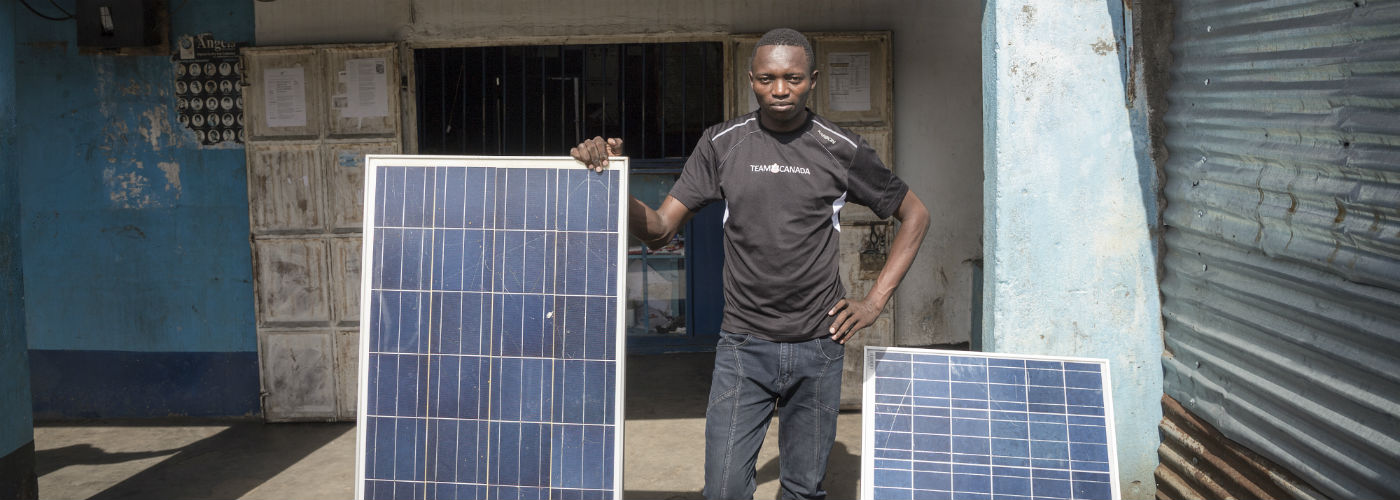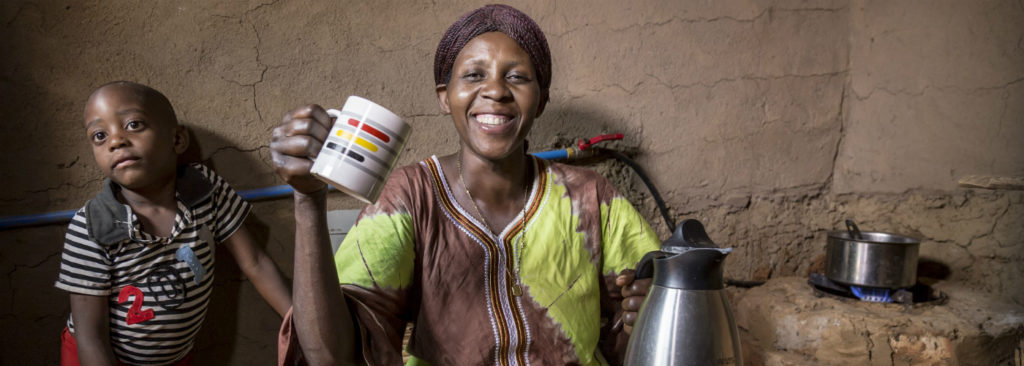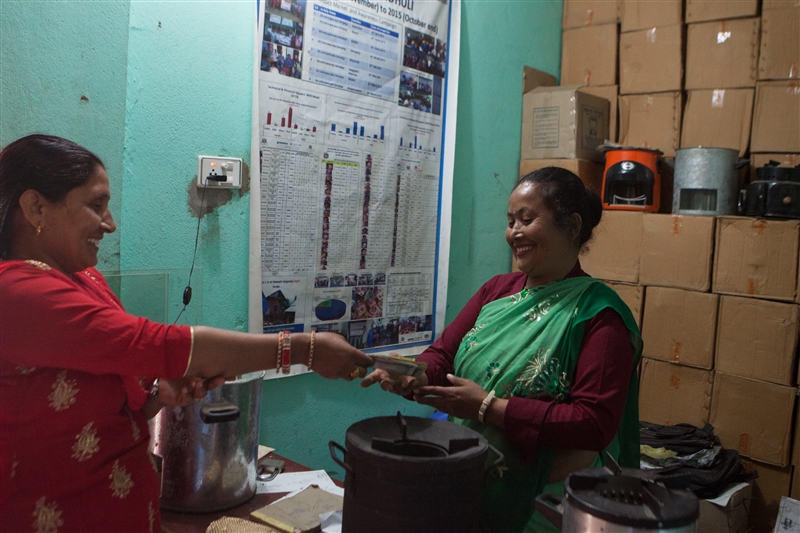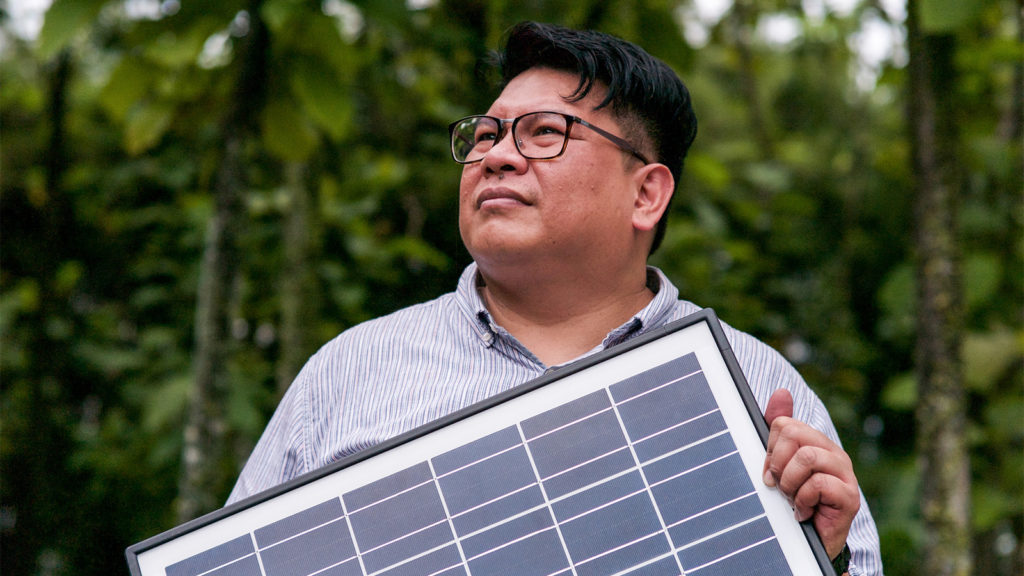Basically everyone agrees that climate change is the biggest challenge of the coming decades. It is also widely recognized that vulnerable people in low- and middle-income countries will be hit hardest by its impact. The consequences have already affected their lives severely. Urgent action is therefore required. As I already laid out in this interview, changing course is still possible. A lot can be gained if we adopt an integrated approach that embraces mitigation and adaptation simultaneously, and not as separate workstreams. For low- and middle-income countries, this would allow them to leapfrog to a low-carbon economy.
Two sides of the same coin
Climate change is a complex issue that requires measures on different levels. Mitigation asks for reducing the emissions of carbon dioxide into the atmosphere by reducing the sources (e.g., by stopping the burning of fossil fuels), or enhancing the ‘sinks’ that store these gases, such as forests and soil. It also entails, among things, putting a halt to deforestation and changing current food systems. On the other hand, adapting to the irreversible effects of climate change is crucial too. Reducing our vulnerability, and particularly that of people in low- and middle-income countries, to rising sea levels, extreme weather, and food insecurity determines our future.
Both mitigation and adaptation measures are considered important, but are usually separated when it comes to climate change policies, financing, and interventions. However, there are potential synergies between climate change adaptation and mitigation. Even in low- and middle-income countries, an integrated approach makes it possible to leapfrog fossil fuels and build a low carbon economy, while also strengthening community resilience to climate change.
Building resilience with energy access
Although renewable energy is mostly applied as a mitigation strategy, it can also address adaptation. For example, biogas not only reduces CO2 emissions related to cooking on fuelwood, but the left over ‘slurry’ from a biodigester restores soil fertility, which is critical in building more resilient food systems. Generally, when energy is used to provide energy access to the most vulnerable, it has social and economic benefits that positively affect the resilience of communities. This energy access-resilience chain is backed by evidence in these two reports: ‘Literature Review on Energy Access and Adaptation to Climate Change’ produced for DFID and ‘Energy and Adaptation – Exploring how energy access can enable climate change adaptation’ by Practical Action Consulting. These reports state that energy provides services for small-scale farmers or community enterprises, including solar powered agricultural irrigation systems, and food processing and storage, thereby increasing economic and climate resilience.
Moreover, access to energy allows for other adaptation measures. For instance, it provides access to information and (communication) technologies that can help farmers to build resilience to climate hazards that affect their crops and livestock, while also keeping informed of market prices. These ICTs also deliver services that assist people in taking necessary measures related to climate disasters. Think of early warning systems in case of Tsunamis.
Agriculture as a mitigation measure
On the contrary, food systems and agriculture are mainly linked to adaptation, both in terms of their vulnerability to climate change, as well as the need to adapt to secure enough food for the world population. Adapting agricultural practices and the food system requires continued emphasis on community-based natural resource management, gender awareness, dealing with land tenure, improving access to financial services and markets, increasing sustainable productivity, and institutional and human capacity building.
At the same time, agricultural production itself contributes to climate change through greenhouse gases (GHG) that result from deforestation and breakdown of organic matter, and the inappropriate or excessive use of agricultural chemicals. Here, mitigation strategies include calculating and reducing GHG emissions at farm level, and enhancing carbon sequestration in soils and biomass. More generally, conservation of soil, water and biodiversity are critical measures in addressing both climate mitigation and adaptation.
The link with the food system is less explored, but a recent study by Cambridge ‘Climate Change Mitigation Beyond Agriculture: a review of food system opportunities and implications’ reviews the opportunities and implications for the food system to mitigate climate change. They conclude that a lot is to be gained when decreasing emissions in, e.g. processing and transportation of food, as well as consuming more sustainable food and reducing losses and waste.
In conclusion, it is critical that we address adaptation and mitigation simultaneously, and not continue to address them as separate work streams. There are ample opportunities to do so, also for low- and middle-income countries, but it requires a strong commitment to the belief that promoting low-carbon economies is not just a concern for developed countries, but for all.








